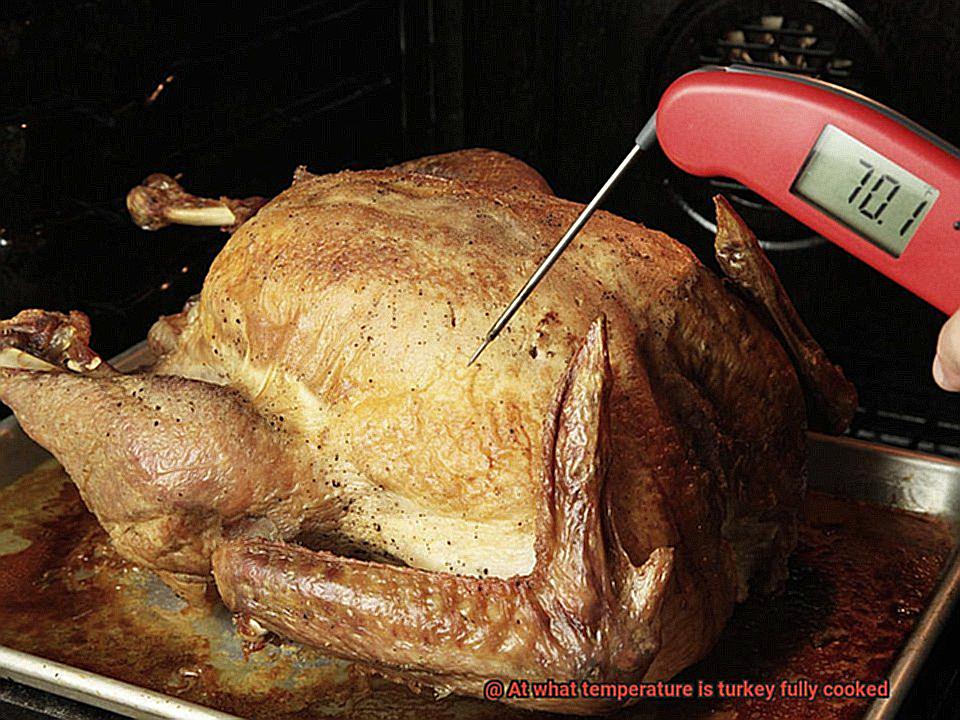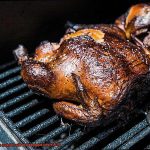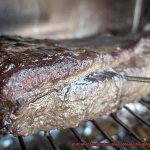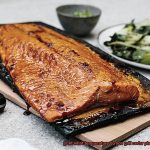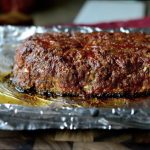It’s that time of year again – Thanksgiving is just around the corner. And for many home chefs, the pressure is on to roast a delicious and succulent turkey. But with so much at stake, how can you be sure that your bird is fully cooked and safe to eat? Fear not, my friends, because the answer lies in understanding cooking temperatures and their impact on turkey.
To ensure that your poultry is safe to consume, it’s crucial to cook it until it reaches the correct internal temperature. So what temperature should you aim for when cooking turkey? The general rule of thumb is 165°F (74°C), but keep in mind that cooking times and temperatures will vary depending on factors like oven type, bird size, and cooking method.
Don’t leave things up to chance – make sure to use a meat thermometer. Insert it into the thickest part of the bird (breast or thigh) and check the temperature before removing your turkey from the oven. And don’t forget to let your bird rest for at least 15 minutes after taking it out of the oven. This will help redistribute juices throughout the meat, resulting in a moist and tender turkey.
Whether you’re an experienced chef or a first-time Thanksgiving cook, remember: a meat thermometer is your best friend. Follow these tips and use your trusty thermometer to achieve perfectly cooked and safe turkey that will steal the show at your holiday dinner table.
Contents
The USDA Guidelines for Cooking a Turkey
The holiday season is upon us, and with it comes the joy of cooking a delicious turkey for your family and friends. However, cooking a turkey can be a daunting task, especially if you are not familiar with the correct cooking temperatures and techniques. Fear not, as the USDA Guidelines for Cooking a Turkey are here to save the day.
The USDA Guidelines for Cooking a Turkey are the most reliable source for determining the correct temperature to cook a turkey. They provide information on the internal temperature that needs to be reached to ensure that the turkey is fully cooked and safe to eat. Following these guidelines will guarantee a perfectly cooked bird every time.
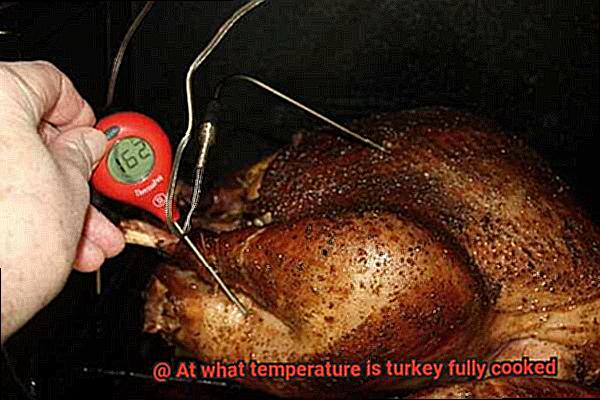
To ensure that your turkey is safe to eat, it is essential that it reaches an internal temperature of 165°F (74°C) in three different places: the thickest part of the breast, the innermost part of the wing, and the innermost part of the thigh. The temperature should be measured in all three places using a meat thermometer to ensure that the entire turkey has been cooked properly.
When using a meat thermometer, make sure to insert it into the thickest part of the breast without touching bone, and into the innermost part of the wing and thigh, also without touching bone. This will give you an accurate reading of the internal temperature of the turkey.
It is worth noting that cooking times can vary depending on factors such as whether or not the turkey is stuffed, its size, and whether it has been thawed completely. Therefore, it is always best to use a meat thermometer to determine when your turkey is fully cooked rather than relying solely on cooking times.
After cooking your turkey, let it rest for at least 20 minutes before carving. This allows for even distribution of juices throughout the bird, resulting in a juicier and more flavorful turkey.
How to Accurately Measure the Temperature of a Turkey
Cooking a turkey for a family gathering can be a daunting task, but ensuring that it is fully cooked is essential to avoid foodborne illnesses. The best way to determine if a turkey is fully cooked is to measure its internal temperature accurately. In this blog post, we will discuss how to measure a turkey’s temperature accurately with five subtopics.
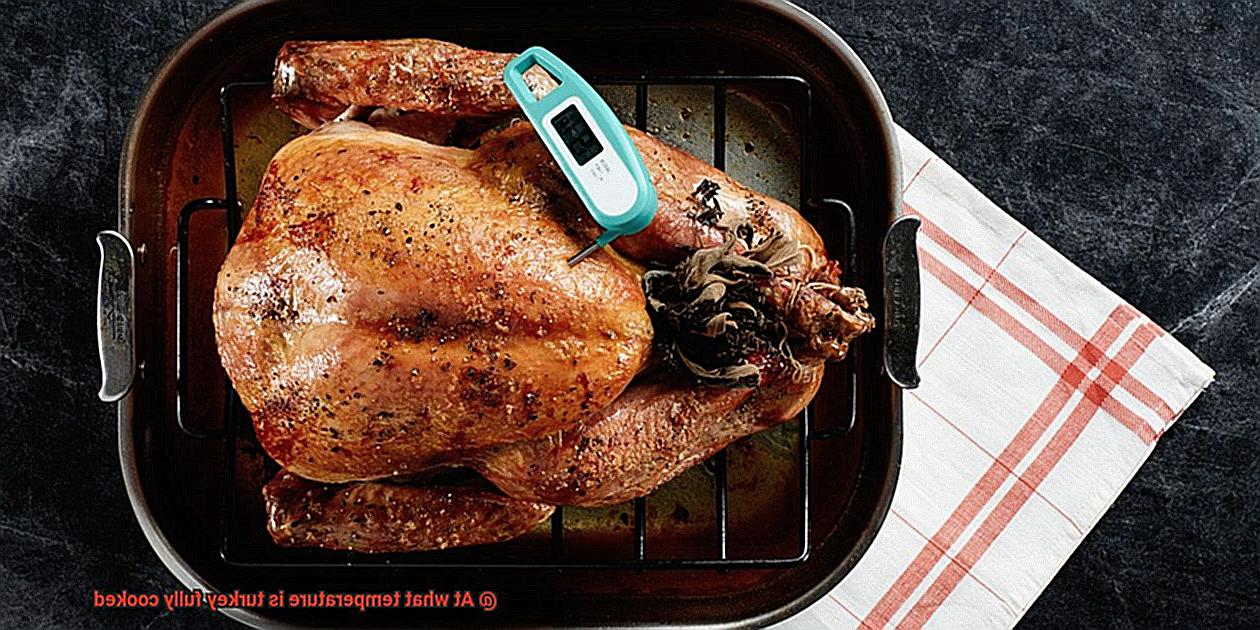
Choose a Reliable Meat Thermometer
The first step in measuring the temperature of your turkey accurately is to choose a reliable meat thermometer. There are two types of meat thermometers: analog and digital. Before using your thermometer, ensure that it is calibrated correctly to get accurate readings.
Insert the Thermometer Correctly
To get an accurate reading when measuring the temperature of your turkey, insert the thermometer into the thickest part of the bird without touching any bones. The ideal temperature for a fully cooked turkey is 165°F (74°C), measured in the thickest part of the bird.
Check Different Parts of the Turkey
Different parts of the turkey cook at different rates, so it is crucial to check the temperature in various areas, including the thickest part of the breast, thigh, and wing. This ensures that your turkey is cooked evenly and thoroughly.
Cover the Breast with Foil
During cooking, you can cover the breast with foil to ensure that all parts of your turkey are cooked evenly. Removing the foil during the last 30-45 minutes of cooking time allows other parts of the bird to cook thoroughly while preventing the breast from overcooking.
Let It Rest Before Carving
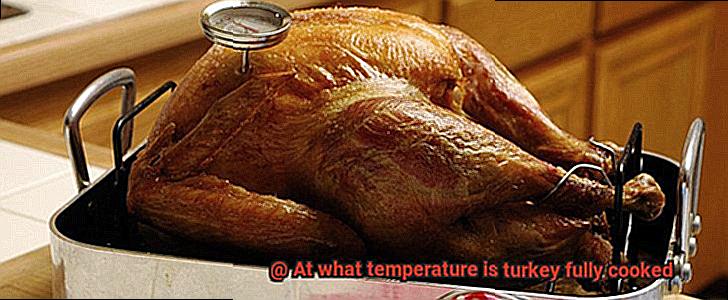
After taking your turkey out of the oven, let it rest for at least 20 minutes before carving. This allows for even distribution of juices throughout the bird, resulting in a juicier and more flavorful turkey.
Tips for Getting a Juicier and More Flavorful Turkey
When it comes to cooking a turkey, the ultimate goal is to serve up a juicy and flavorful bird that will have your guests raving. Achieving this can be a challenge, but fear not. Here are five tips that are sure to make your turkey the star of your next holiday meal.
First and foremost, consider brining your turkey. This involves soaking the bird in a solution of salt, sugar, and water for several hours before cooking. The result? A turkey that is not only infused with delicious flavor but also stays moist during cooking. The key is to plan ahead, brining takes time but is well worth the effort.
Another way to add moisture and flavor to your turkey is by using butter or oil. Rubbing it on the outside of the bird before cooking can help keep it moist, and also adds a rich, buttery taste. Your guests will appreciate the extra effort.
For even more flavor, try stuffing your turkey with aromatics like herbs, onions, and garlic. These ingredients will infuse the meat with their delicious flavors and also help keep it moist during cooking. Plus, the aroma will fill your kitchen with a mouth-watering scent.
Basting your turkey frequently with pan juices or broth is another way to keep it moist and flavorful. Spooning the liquid over the bird every 30 minutes or so will prevent it from drying out and also add extra flavor. And don’t forget to cover your turkey with foil at the beginning of cooking to trap in moisture.
Last but not least, allowing your turkey to rest for at least 20 minutes after cooking is crucial for a juicy bird. This allows the juices to redistribute throughout the meat, resulting in tender and flavorful meat that is sure to impress.
Why Is It Important to Let the Turkey Rest After Cooking?
As you prepare for your next holiday meal, don’t overlook the importance of letting your turkey rest after cooking. It’s a crucial step that is just as essential as ensuring the meat is cooked to the correct temperature. As an expert on this topic, I can attest to the fact that resting your turkey is the key to achieving a juicy and flavorful bird that will impress your guests.
So, why is it so important to let your turkey rest? Let’s delve into the reasons:
- Juiciness: Resting allows the meat to reabsorb its natural juices, which helps keep it moist and tender. When you carve your turkey immediately after cooking, you risk losing all those delicious juices, resulting in a dry and tough bird.
- Timing: The amount of time needed for your turkey to rest will depend on its size. A general rule of thumb is to let it rest for at least 15-20 minutes before carving. However, for larger turkeys, it may be necessary to let them rest for up to an hour. This gives you ample time to finish preparing any side dishes or gravy while the bird sits.
- Covering: While the turkey rests, it’s important to cover it loosely with foil or a clean towel. This keeps the meat warm and prevents any unwanted debris or dust from contaminating it.
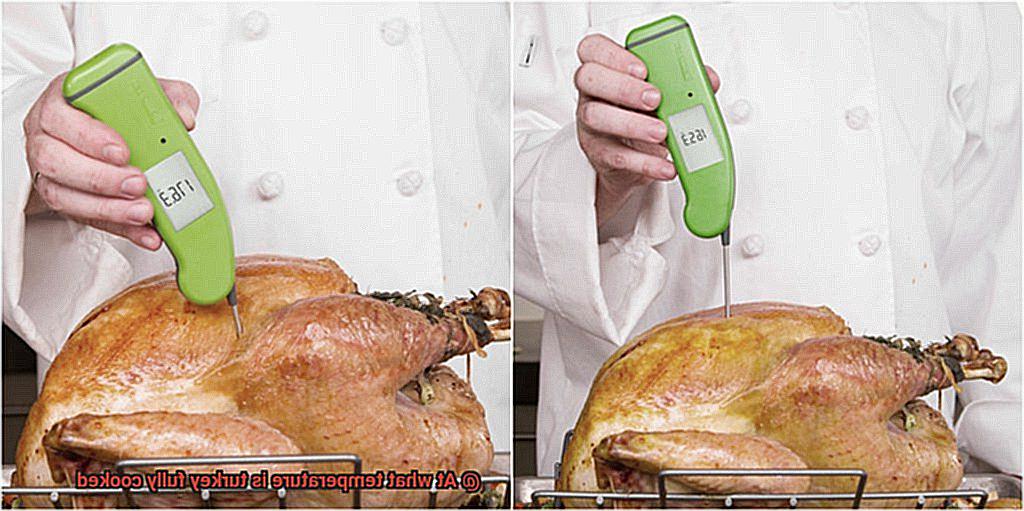
But there’s more to it than just achieving a juicy and flavorful bird. Resting your turkey also gives you a chance to showcase your culinary skills by finishing any side dishes or gravy while the turkey sits. Plus, if you’re hosting a large holiday meal, resting your turkey can help ensure that all of your dishes are served hot and ready at the same time.
The Difference Between Raw and Cooked Meat
When it comes to cooking turkey, understanding the fundamental difference between raw and cooked meat is essential. Raw meat refers to meat that has not been cooked, while cooked meat has been heated to a safe temperature to kill any harmful bacteria or viruses. Consuming raw meat, especially poultry, could be dangerous as it may contain harmful pathogens such as Salmonella, E.coli, or Campylobacter that can cause foodborne illness if not cooked properly.
So how do you cook turkey safely? The USDA Food Safety and Inspection Service (FSIS) recommends cooking turkey to a temperature of 165°F (74°C). Using a food thermometer will ensure that the internal temperature of the turkey reaches this safe temperature. But it’s important to note that the color of cooked turkey is not a reliable indicator of doneness. Even if a turkey is fully cooked at 165°F, it may still have pink juices.
In addition to cooking your turkey properly, handling raw meat safely is crucial. This means washing your hands and surfaces thoroughly before and after handling raw meat, using separate cutting boards for raw meat and other foods, and storing raw meat in the refrigerator below 40°F (4°C) until ready to cook.
To summarize, here are some key points to keep in mind:
- Raw meat has never been heated or cooked, while cooked meat has been heated to a safe temperature.
- Cooking turkey to 165°F (74°C) is essential in killing harmful bacteria.
- The color of cooked turkey is not a reliable indicator of doneness; use a food thermometer instead.
- Handling raw meat safely involves washing hands and surfaces thoroughly, using separate cutting boards, and storing raw meat properly.
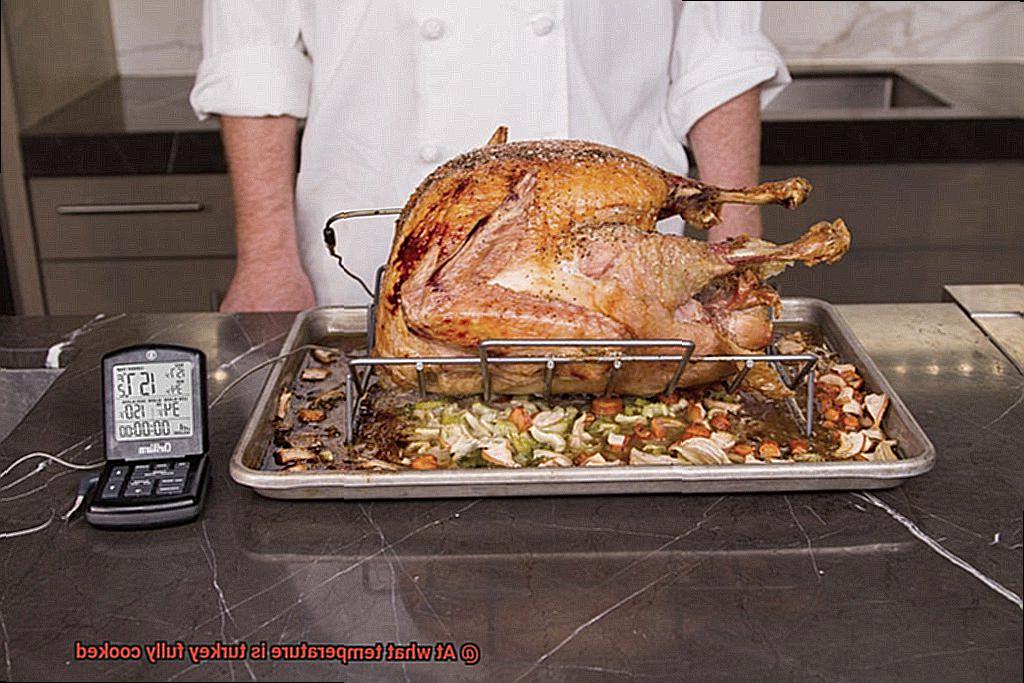
Common Mistakes When Cooking a Turkey You Should Avoid
As the holiday season approaches, it’s time to start preparing for the centerpiece of the feast. But before you take on the challenge of cooking a turkey, let’s talk about some common mistakes that could ruin your bird and disappoint your guests.
First and foremost, thawing your turkey properly is crucial. Don’t make the mistake of thinking that you can toss a frozen turkey into the oven and hope for the best. Thawing in the refrigerator for several days is essential to ensure even cooking and avoid harmful bacteria.
Another common mistake is neglecting to season your turkey. Don’t let a bland and uninspiring bird be the downfall of your holiday meal. Get creative with herbs, spices, salt, and pepper both inside and outside the turkey to elevate its flavor profile.
Cooking temperatures are another area where many people go wrong. Don’t be fooled into thinking that cooking at a higher temperature will result in a faster-cooked turkey. In fact, it can lead to a dry and overcooked exterior while leaving the inside undercooked. Instead, cook your bird at a lower temperature for a longer period of time to ensure even cooking throughout.
Lastly, carving your turkey too soon after taking it out of the oven is an easy mistake to make. Resist the urge to dive right in and let your bird rest for at least 20-30 minutes before carving. This will allow the juices to redistribute back into the meat, resulting in a more succulent and flavorful turkey.
To sum it up, avoid these common mistakes when cooking your turkey to ensure a delicious and impressive holiday meal:
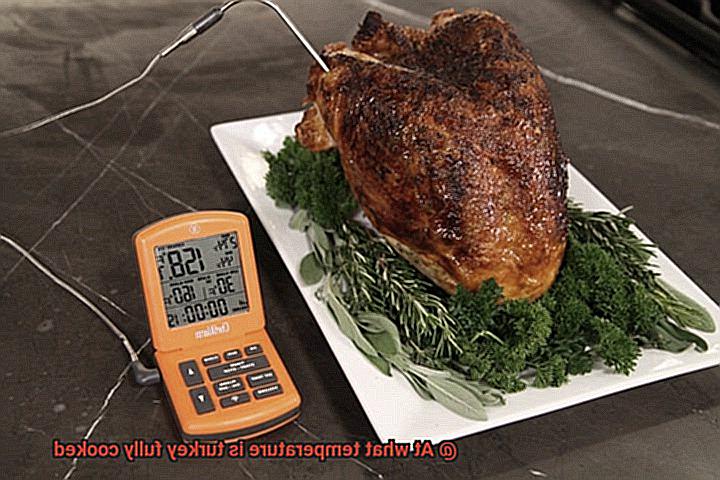
- Improperly thawing your turkey
- Neglecting to season your bird
- Cooking at too high of a temperature
- Carving too soon after taking it out of the oven
Different Methods of Cooking a Turkey
From roasting, grilling, to deep-frying, there are various ways to cook a turkey that will leave your taste buds tantalized.
Roasting is the classic and most popular method for cooking a turkey. It’s easy and produces mouth-watering results. Simply preheat your oven to 325°F, place the turkey in a roasting pan, lather with butter or oil, season with salt and pepper, and roast for approximately 15 minutes per pound. To ensure the meat is fully cooked, use a meat thermometer to check the temperature at the thickest part of the turkey (usually the thigh) – it should reach 165°F.
Grilling is another way to add some zest to your turkey. Preheat your grill to medium-high heat (about 350°F), place the turkey on the grill breast side up, and close the lid. Grill for approximately 12-15 minutes per pound and monitor the temperature with a meat thermometer until it reaches 165°F.
If you’re feeling adventurous, consider deep-frying your turkey. While it requires more preparation than other methods, the result is worth it – crispy skin and juicy meat. Heat your oil to 350°F in a large pot or fryer, carefully lower the turkey into the hot oil, and fry for approximately 3-4 minutes per pound. Use a meat thermometer to check if it has reached 165°F.
No matter which method you choose, using a meat thermometer is crucial for ensuring your turkey is fully cooked and safe to eat. Insert it into the thickest part of the meat without touching bone or hitting the cavity. Once it reaches 165°F, your turkey is ready to be served.
Other Safety Measures to Consider When Preparing a Turkey
Cooking a turkey for Thanksgiving dinner is not just about getting it to the correct temperature, it’s also about taking all the necessary safety precautions. When preparing a turkey, there are other safety measures to consider besides cooking it properly. Here are some tips that will help you prepare a delicious and safe meal for your loved ones.
Properly thawing the turkey is crucial. You can either refrigerate it for several days or use the cold water method. The latter involves placing the turkey in a sink or container of cold water and changing the water every 30 minutes until it is fully thawed. This ensures that the turkey is not only cooked thoroughly, but it’s also safe to eat.
Cross-contamination is another major concern when handling raw poultry. To avoid this, ensure that any raw juices from the turkey do not come into contact with other foods or surfaces in your kitchen. Use separate cutting boards and utensils for raw meat and always wash your hands and surfaces thoroughly.
If you plan on stuffing your turkey, make sure to do so correctly. The stuffing should be prepared separately and only stuffed inside the turkey right before it goes into the oven. This ensures that the stuffing reaches a safe temperature of at least 165°F.
Once your turkey is fully cooked, let it rest for at least 20 minutes before carving it. This allows the juices to redistribute and ensures that the meat is tender and juicy. So, impress your guests with your cooking skills while keeping them safe from any potential foodborne illnesses by following these additional safety measures.
W1VsvWNpQOk” >
Conclusion
In conclusion, mastering the art of cooking a turkey is essential to any successful holiday feast. To guarantee that your bird is fully cooked and safe for consumption, it’s crucial to understand the impact of cooking temperatures on turkey. While the general rule of thumb is an internal temperature of 165°F (74°C), factors such as oven type, bird size, and cooking method can affect cooking times and temperatures. So it’s best to use a meat thermometer for accurate measurements.
To achieve a succulent and flavorful turkey, don’t forget to brine your bird, slather it with butter or oil, stuff it with aromatic herbs and spices, baste it frequently with pan juices or broth, and let it rest for at least 20 minutes after cooking. However, there are also common mistakes to avoid when cooking a turkey such as improper thawing or carving too soon after taking it out of the oven.
Remember that proper food safety measures should also be taken when preparing your turkey. This includes properly thawing the bird, avoiding cross-contamination, stuffing it correctly, and letting it rest before carving.

